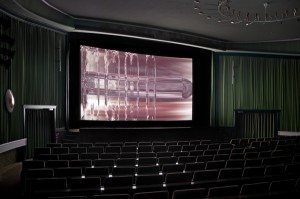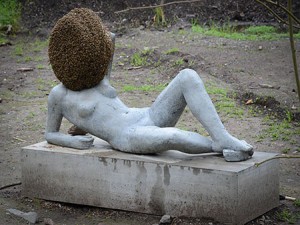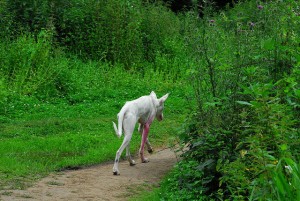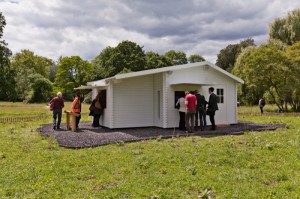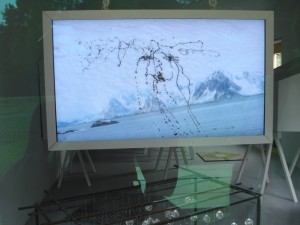I’ve been struggling to summarise my thoughts on dOCUMENTA (d13). In the weeks immediately following its vernissage, the general response seemed to be one of elation and excitement, with several claiming it was possibly The Best exhibition of the 21st century. It wasn’t to be missed. On arriving in Europe two months later, however, the vibe was definitely cooler and much of the opening energy had (understandably) lulled. Responses, especially among artists, were mixed.
dOCUMENTA is undoubtedly the most highly anticipated curatorial event on the calender and a thoughtful example of high-end cultural tourism. This year’s dOCUMENTA was curated by Carolyn Christov-Bakargiev (whom we know from the 2008 Biennale of Sydney), and most definitely informed by Chus Martinez (who is less well known in Australia but is a formidable intellect and ex-chief curator at the MACBA in Barcelona). It was a mammoth affair, as most dOCUMENTAs tend to be, but this year’s expanded its footprint further, including:
– 4 years of preliminary encounters, seminars and preparations (tick)
– a 100-day exhibition and other activities in Kassel (tick)
– a series of seminars and a 30-day exhibition in Kabul (new)
– an 8-day seminar in Alexandria (new)
– a 14-day retreat in Banff (new)
– the publication, 100 notes—100 thoughts, comprised of facsimiles of existing notebooks, commissioned essays, collaborations and conversations (new).
d13 brought together art and research, science and the humanities, past and present. It platformed existing and new conversations among artists, scientists, writers, inventors, philosophers, poets, activists and more. The event underlined art as a living and breathing thing in time and across time, inside and outside the art world, inherently interspersed. To me it read in the context of Donald Brook’s idea of art being anything that affects memetic innovation—and not just those items ordained by us as members of the art world.
In its holistic approach, d13 was too vast to gauge the shape of and imbued with such dynamism that it was difficult to discern the sum of its parts. It existed more as a set of ideas, lines of the body; not so much exhibition as personality, with characteristics and public and private moods; comparable, possibly, to a universe. It left me without conclusion (a nice space) but became more clear in its conceit when I came across a recent quote by Christov-Bakargiev which referred to the exhibition as an ‘obsolete twentieth-century object’. In its scale, structure and skilled conflation of disciplines and activities, d13 exploded the conventional notion of the exhibition.
But sometimes we want an exhibition. At an art event we want to see Art. At an art event occurring every five years we particularly want to see Very Good Art. Most of us, 99% of us at least, are not in a position to travel to four different locations around the globe to experience a curator’s full intent.
The best works on display at d13 in Kassel were the ones that brought art and life together through the artist’s distinct eye, without didacticism or a mandate to educate. Pierre Huyghe’s work, untitled (2012), was remarkable, a truly altering art experience that freely allowed the audience to negotiate their way through a living yet crafted environment that mulched together classical concepts of fertility, entropy and leisure. Murky, uncertain, sensorial and at times foreboding, Huyghe’s work offered a truly profound and unsettling encounter. Joan Jonas’s work, Reanimation (2010–12), although badly situated, offered another high point. Here we viewed the world around us—specifically landscape, its pilgrimage, precarity and representation. Jonas took us on an aesthetic journey that was revealing, sumptuous and smart and didn’t make us feel talked at. Even Trisha Donnelly’s vignettes, which have nothing to teach us outside of the act of looking itself, were quietly potent.
d13’s curatorial approach was no doubt conceptually exciting and challenging, as a good dOCUMENTA should be. For those seeking a more focused and fulfilled object–audience experience, however, it perhaps offered a more uneven encounter. While the director of dOCUMENTA (14) is yet to be announced, let me put my wish list out there: I would like to see a dOCUMENTA that is as conceptually ambitious as this one yet physically modest; a tough and concise selection of works that encourages and rewards close looking; something with a little less fat and spend. If possible, something gentler on the feet would be nice too.
dOCUMENTA (13), Kassel, Germany, 9 June – 16 September 2012.
